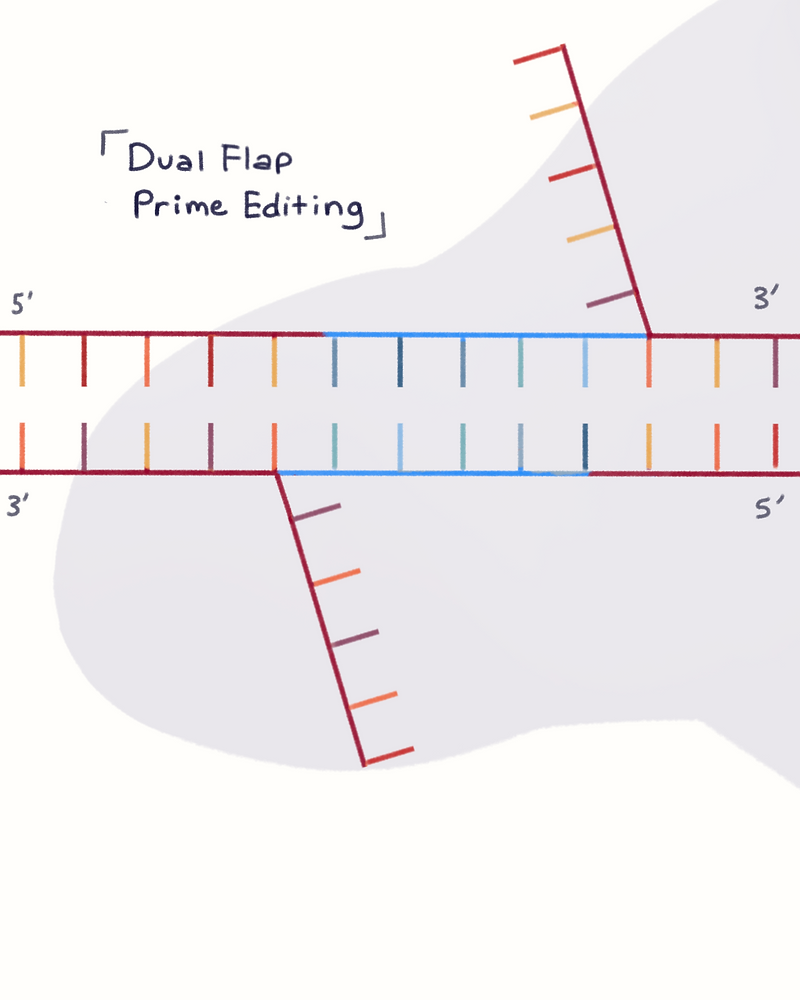New Gene Editing Technology Enables Precise Complete Gene Insertion

Table of Contents
The Science Behind Precise Complete Gene Insertion
Precise complete gene insertion relies on harnessing the cell's natural DNA repair mechanisms, primarily homology-directed repair (HDR). Unlike older methods that might only modify a single base pair or disrupt a gene (gene knockout), this technology allows for the precise insertion of a complete, functional gene at a specific location within the genome. This is achieved using advanced gene editing tools, often enhanced versions of CRISPR-Cas9 systems, in conjunction with a carefully designed "donor DNA" template containing the gene to be inserted. The process involves several key steps:
- Targeting: CRISPR-Cas9, guided by a specific RNA sequence, creates a double-strand break at the desired location in the genome.
- Homologous Recombination: The cell's natural repair machinery attempts to fix the break using the provided donor DNA template as a guide.
- Insertion: If successful, the donor DNA, containing the desired gene, is precisely integrated into the genome at the targeted location, replacing the defective gene.
This method offers significant advantages over previous techniques:
- Increased Accuracy: Minimized off-target effects compared to older gene editing tools.
- Complete Gene Replacement: Allows for the correction of large gene deletions or mutations, not just single base pair changes.
- Improved Efficiency: Higher success rates in inserting the correct gene compared to older gene insertion methods.
Applications of Precise Complete Gene Insertion in Gene Therapy
The potential applications of precise complete gene insertion in gene therapy are vast. The ability to accurately insert functional genes offers hope for treating numerous genetic disorders caused by gene mutations or deletions.
- Cystic Fibrosis: Correcting the CFTR gene mutation could potentially cure this debilitating lung disease.
- Sickle Cell Anemia: Replacing the mutated beta-globin gene could alleviate the symptoms and complications associated with this blood disorder.
- Hemophilia: Inserting functional clotting factor genes could eliminate the need for lifelong blood transfusions and prevent bleeding episodes.
The prevalence and impact of these diseases are substantial, underscoring the transformative potential of this technology. Beyond gene therapy, precise complete gene insertion also holds promise for applications in agricultural biotechnology (e.g., improving crop yields and nutritional value) and drug discovery (e.g., creating cellular models for disease research).
Challenges and Ethical Considerations of Precise Complete Gene Insertion
Despite its immense potential, precise complete gene insertion faces several challenges:
-
Off-Target Effects: Although significantly reduced compared to previous methods, the possibility of unintended edits at other genomic locations still exists.
-
Delivery Mechanisms: Efficient and safe delivery of the gene editing machinery and donor DNA to target cells remains a crucial hurdle. Current research is focused on improving viral vectors and exploring non-viral delivery systems.
-
Cost: The technology is currently expensive, limiting its accessibility.
-
Safety Concerns: Rigorous testing and clinical trials are crucial to ensure the long-term safety and efficacy of this technology. Potential adverse effects must be carefully evaluated.
-
Ethical Considerations: The application of precise complete gene insertion to germline cells (cells that pass on genetic information to future generations) raises significant ethical concerns. Equitable access to this life-changing technology also requires careful consideration.
Addressing Off-Target Effects and Improving Delivery Mechanisms
Ongoing research is actively focused on minimizing off-target effects through improved CRISPR-Cas9 systems and the development of more specific targeting strategies. Advancements in viral vectors, such as adeno-associated viruses (AAVs), and non-viral delivery systems, like lipid nanoparticles, are improving the efficiency and safety of gene delivery.
The Future of Gene Editing with Precise Complete Gene Insertion
Precise complete gene insertion represents a major advancement in gene editing technology, offering increased accuracy, efficiency, and the ability to correct complex genetic defects. Its potential to transform the treatment of genetic diseases is undeniable. However, addressing the challenges and ethical considerations associated with this technology is critical for its responsible and equitable application. Learn more about the exciting advancements in precise complete gene insertion and its potential to reshape the future of medicine. Stay informed about the latest breakthroughs in precise complete gene insertion technology – the future of gene therapy is here.

Featured Posts
-
 Carlos Alcaraz Triumphs In Monte Carlo Musettis Injury Gives Alcaraz The Edge
May 30, 2025
Carlos Alcaraz Triumphs In Monte Carlo Musettis Injury Gives Alcaraz The Edge
May 30, 2025 -
 Americas Moto Gp Marquezs Pole Position Maintains Perfect Start
May 30, 2025
Americas Moto Gp Marquezs Pole Position Maintains Perfect Start
May 30, 2025 -
 Orden Ejecutiva De Trump El Fin De La Reventa De Boletos En Ticketmaster
May 30, 2025
Orden Ejecutiva De Trump El Fin De La Reventa De Boletos En Ticketmaster
May 30, 2025 -
 Btss Reunion Teaser Sends Fans Into A Spin Comeback On The Horizon
May 30, 2025
Btss Reunion Teaser Sends Fans Into A Spin Comeback On The Horizon
May 30, 2025 -
 Boesen Chosen As Grand View University Commencement Speaker
May 30, 2025
Boesen Chosen As Grand View University Commencement Speaker
May 30, 2025
Latest Posts
-
 Analyzing Thompsons Unlucky Monte Carlo Performance
May 31, 2025
Analyzing Thompsons Unlucky Monte Carlo Performance
May 31, 2025 -
 Bad Luck In Monte Carlo Thompsons Struggle
May 31, 2025
Bad Luck In Monte Carlo Thompsons Struggle
May 31, 2025 -
 Upset Alert Griekspoor Defeats Top Seeded Zverev In Indian Wells
May 31, 2025
Upset Alert Griekspoor Defeats Top Seeded Zverev In Indian Wells
May 31, 2025 -
 Staying Safe During The Rise Of Covid 19 Variant Lp 8 1
May 31, 2025
Staying Safe During The Rise Of Covid 19 Variant Lp 8 1
May 31, 2025 -
 Alexander Zverev Loses To Tallon Griekspoor At Indian Wells
May 31, 2025
Alexander Zverev Loses To Tallon Griekspoor At Indian Wells
May 31, 2025
